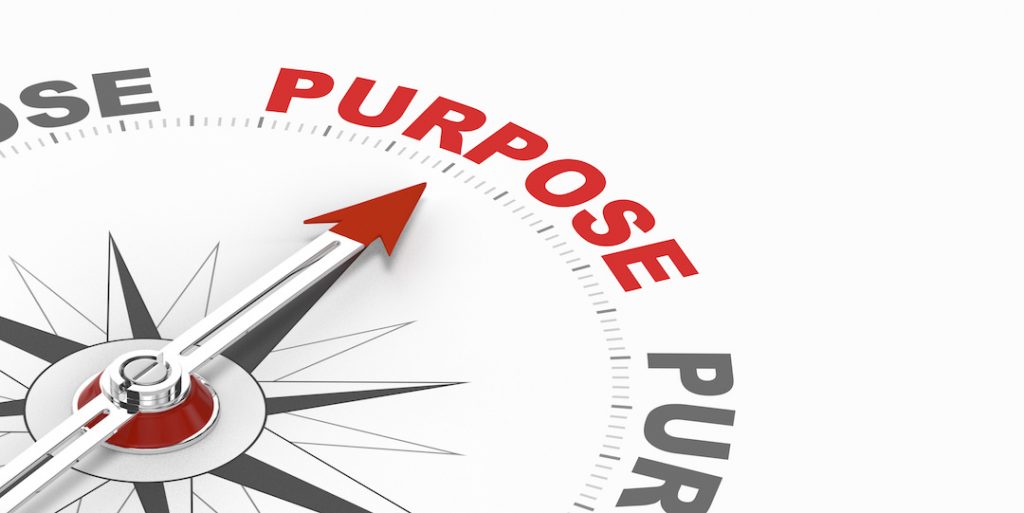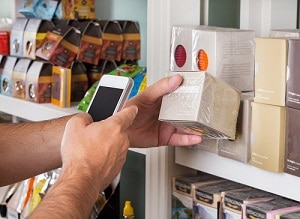
Consumers today realize that they are voting with their purchases. The world we live in is the result of the products we buy. It’s not enough for brand builders anymore to provide the best, the cheapest, or the most for the money. Now, more than ever, your brand must stand for more than its mercantile value.
Evolution of Brand Purpose
Two decades ago, the term “Brand Purpose” stood only for what the branded product did for you, how well it did the job, and the solution its products provided. It was all very rudimentary. In those days, the purpose of a bar of soap was to get your hands clean. The purpose of a gallon of gas was to propel your automobile. And the purpose of electricity was to power your appliances. Nothing very social here. Just get the job done the best way.
But the meaning of “the best way” has changed significantly as the world has been giving more attention to health and environmental discoveries. Today’s “best way” now has to take into consideration the long-term effects of the use of your branded products, the ingredients, the way it was made, and the way your labor was treated. Does your laundry soap provide us with the cleanest clothes but pollute the water from which we drink and grow our crops for the food we eat?
In other words, there is a much bigger brand purpose that consumers are looking for today. Why do we want to spend our money to poison ourselves and our children, or to destroy the environment for generations to come? Why do we want to continue to invest in brands that take the old, short-sighted view of brand purpose? Why do we want to give our money to interest groups that influence the government to relax environmental and health restrictions on the food and energy supply? And why do we want to continue to purchase formally popular brands that have been shown to take anti-social actions in their production and labor practices? We don’t!
Brand Purpose and the Climate Change
 What’s changed? Well, how about the temperature for one? The effects of climate change become more apparent and affect more of your customers directly. With firestorms, super storms, flooding, and other weather-related anomalies, it’s hard to conduct business as usual. How about health? Diabetes, cancer, and vector-borne diseases are reaching epidemic proportions. Your customers know it. Many are already affected.
What’s changed? Well, how about the temperature for one? The effects of climate change become more apparent and affect more of your customers directly. With firestorms, super storms, flooding, and other weather-related anomalies, it’s hard to conduct business as usual. How about health? Diabetes, cancer, and vector-borne diseases are reaching epidemic proportions. Your customers know it. Many are already affected.
Thanks to increasing connectivity, your customer is realizing, at an accelerating rate, that there is a direct relationship between how they spend their money, and their own welfare and that of their children.
Sure, there is a constant demand to get the price down to be competitive. This continues to pressure producers to look for the ways and means to manufacture their products with the most cost-efficient methods possible. Without resistance, those methods can have long-term negative effects on people’s lives.
More Informed Consumers
Another thing that’s changed in the past 20 years is access to information. Now the average consumer is becoming rapidly educated about these long-term effects and their relationship to the products they purchase. And sure, there is still a great deal of the consumer public that either hasn’t gotten the message yet, or doesn’t care, or simply doesn’t believe in the science behind the message.
This is where government and institutions have justified stepping in, sometimes to save our lives in spite of our buying habits. It’s unfortunate because the enforcement of these regulations tends to be simplistic, hard on business, tedious, and overbearing. However, if private industry can’t embrace health, environment, and social well-being as a “brand purpose”, we will get more government controls. And conversely, if the interest groups for those industries can relax the controls, then our health and welfare is at stake.
The concept of controls, whether it plays out in practice or not, is to create a level playing field so that everyone in a particular industry must play by the same rules. Controls discourage producers from cheating to meet the price. And yes, this can initially raise the price on an entire category subject to this kind of regulation. But in the long run, most industries discover ways and technologies to become more efficient and more competitive again. We’ve seen this already with the worldwide banning of ozone hole causing substances and aerosol propellants. Guess what? The ozone holes have diminished since the banning.
“Good Guy” Brands
So, what does this all mean for 21st-century brand builders? Is there now a market for “good guy” brands with mission statements and brand promises committed to good health, good labor practices, and good environmental practices consistent with the long-term welfare of their customers? Do brands that tout such humanitarian ethics have an advantage in the marketplace? Will the customer actually pay more for products whose contents and production practices are better for them and their children? Or does the government have to step in with regulations so the “good guy” brands can survive in a market driven by the lowest price no matter what?
We believe things are changing in two important ways. First, an increasing number of enlightened customers today will pay a little more for products with a socially conscious brand purpose. These customers will become brand loyal for social reasons. Second, technological breakthroughs are enabling cost reductions even with socially conscious production and labor practices. A.I., green technology, and robotics are giving producers a viable economic alternative to unsustainable production practices. There is increasing demand and practicality at the same time. Brands that jump on these opportunities first will have the marketing advantage in the 21stcentury.
Follow Your Passion…Follow Opportunity
So how do brand builders find their brand purpose? All our lives, we’ve heard people say, “Follow your passion!” Well, you can follow your passion right into the poor house where you will find a ton of starving artists, writers, and poets. Only the fortunate ones have found a way to make a living expressing their passion. When we started Barefoot Wine, like most people who go into business, we thought we would have to give up on our true passions which were conservation and human rights. But we found a way!
Instead of following our passion, we followed our opportunity – passionately! We had no intention of going into the wine business, but an opportunity in that industry presented itself. Luckily, in spite of the fact that we had no idea what we were up against, we seized upon the opportunity, learning while doing. One of the things we learned was that we could use our passion in a marketing plan. It was risky! With a passion for conservation and human rights, we had to take sides on issues that were then highly politicized. It was a real no-no for play-it-safe corporate America in those days.
League to Save Lake Tahoe
For instance, by supporting the League to Save Lake Tahoe, we were viewed as taking sides with “hippie tree-huggers” bent on destroying the Lake Tahoe economy. But we did it anyway with signs and placards on our products in the marketplace touting our support to “Keep Tahoe Blue!” At first, the contractors, developers, and realtors in the region who were keen on making money off the fastest way to develop Lake Tahoe wouldn’t buy our products. They thought that if the ideas we supported were successful, it would bring in regulation that would add to the cost of development.
Meanwhile, the folks who wanted to save the lake and took the long-term view of thoughtful and sustainable development bought our products. Ironically, we were proven to be on the right side of history. That’s because property values increased as a result of protecting the lake from pollution. Lake Tahoe property became a more desirable investment because it was next to a blue lake and not a green one. And our sales suddenly soared!
LGBT
Similarly, our early support for the LGBT landed us on the hot seat with gay-rights opponents. This was at a time when the world thought that AIDS was a gay disease transmitted by simple contact. Because we came out supporting gay rights, those who took offense initially boycotted our products. But the LGBT community embraced our products. Ironically, and once again, we were on the right side of history. AIDS was certainly not limited to any one group, and it wasn’t passed on by simple contact. People began to realize they had LGBT members among their family, friends, and acquaintances.
Even though these examples are 30 years old, they demonstrate the power of brand purpose. Today, recognition of human rights and the value of conservation are mainstream. Today, brands with a mission statement that includes these and other higher, more lofty purposes, have the social advantage. And today, brands who operate contrary to these purposes get found out and face scandals that hurt them in the marketplace.
“If you really want to change things, put a buck on it!”
It’s not a risky idea, like it was 30 years ago, for brands to have purpose. Now it’s a risky idea for brands to not have a social purpose – if for no other reason than their competitors with purpose will have the upper hand. If it’s starting to sound like we believe that positive social, environmental, and healthful change can and should happen at the brand level, we do! In fact, as Bonnie likes to say, “If you really want to change things, put a buck on it!”
Today, customers are offering their bucks to brands with purpose. Our mission statement had a clear purpose, “Making the world a better place through wine!” We did it by supporting groups that were committed to making that happen. We printed their goals on our marketing materials. We helped them at their fundraisers. And we got their word out in a forum that they had no previous access to, the supermarket.
Surfrider Foundation
How is your brand making the world a better place?
As a brand builder, you are in a unique position to educate your consumer. For instance, when we got started, we forged a strategic alliance with the Surfrider Foundation. They were new and we were new. But we both had an interest in clean beaches and healthy oceans. We used tags on our products in the supermarkets that educated our customers about the dangers of high bacterial levels in the oceans and the fact that the Surfrider Foundation was testing the water for our customers’ and their children’s safety.
Many of our customers had never heard of the Surfrider Foundation, but now they knew two things. One, that our brand was committed to clean oceans and beaches where their children played. And two, that there was a nonprofit foundation that was protecting them and their children. We were able to raise awareness and funds for the Surfrider Foundation, and we aligned our brand purpose with their mission. Now those customers had a social reason to buy our product.
Advertising Thru Brand Purpose
Ours is just one example of a brand with purpose. How will your brand prove its purpose to your customers? We believe that the strongest brands are movements with products to go with them. Customers buy into the movement and advocate the brand that supports that movement. We also believe this is the most effective form of advertising. For us, it was our only form of advertising, and it has proven to be highly successful – and profitable!
Companies spend millions on brand awareness. They do this through commercial advertising, websites, social marketing, endorsements, accolades and awards. Shouldn’t some part of that advertising budget be earmarked for the groups that stand for and promote the greater causes to which you and your company subscribe?
Brand purpose doesn’t stop at the retail shelf with your signage, sell tags, or other marketing materials anymore. Today’s customers want to know who is the person behind the brand? Is it the president, CEO, or spokesperson? What is their personal brand statement? As customers, they want to know how the brand builder weighs in on the important health and environmental issues of our day. If it’s your brand, besides being a great product at a great price, your customer asks, “What do you stand for?”

